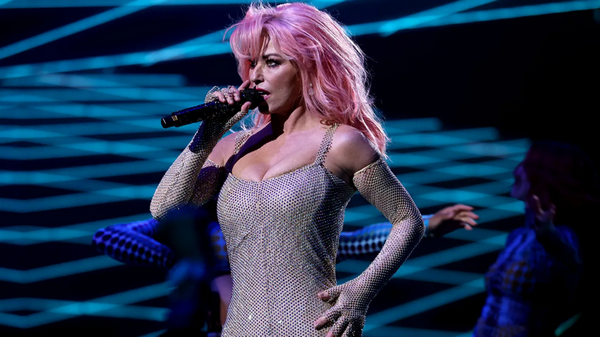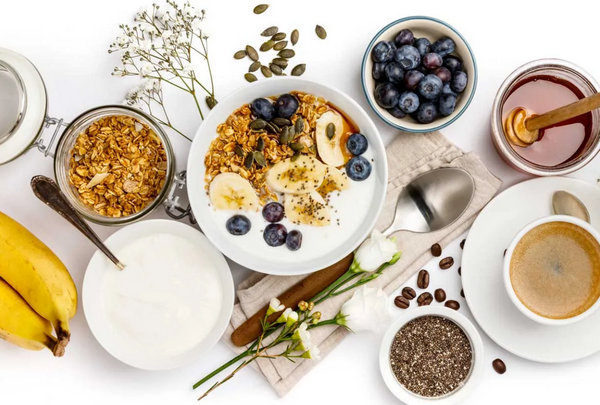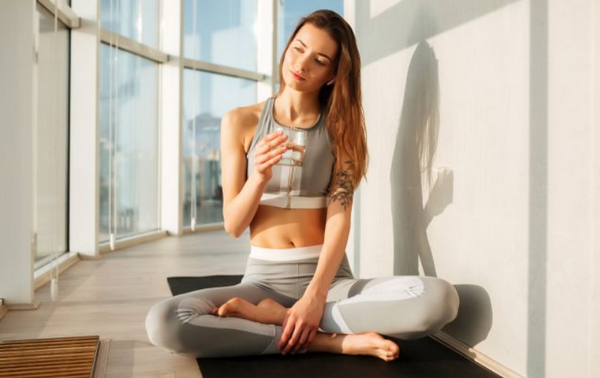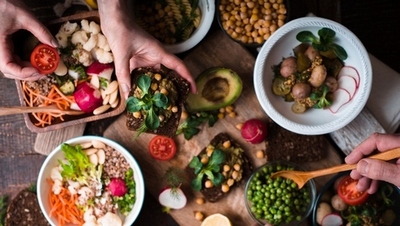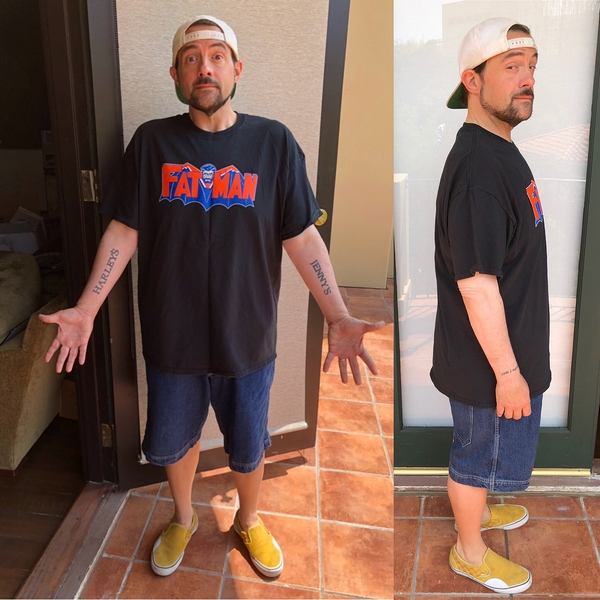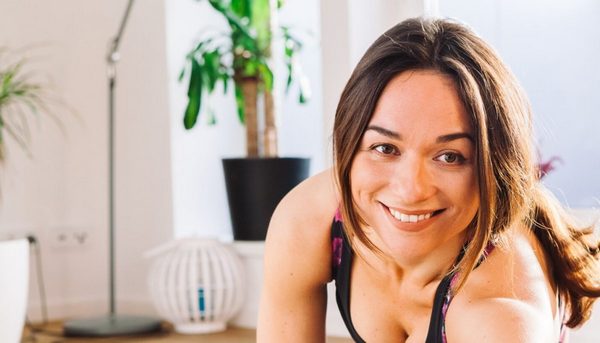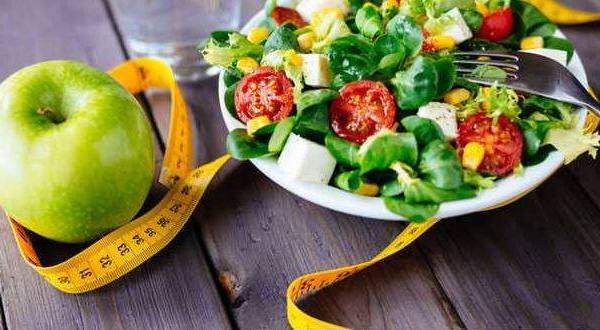
Healthy Vegan Protein High Recipes And Vegetarian Diet Plan For Weight Gain
Not only non-vegetarian foods but vegetarian foods can also help in achieve the amount of protein required by a body. Here's a vegetarian diet plan for bodybuilders. With workout, diet is an equally important aspect of bodybuilding.
HIGHLIGHTS
- It is important for bodybuilders with a vegetarian diet to get calories
- Legumes, tofu and dairy foods can provide the body with enough nutrients
- Quinoa instead of brown rice can provide the body with proteins
Let’s be honest, vegetarians have a harder time following a high protein diet than people who eat meat.
If you’re trying to build build muscle on a vegetarian diet, I’m sure you’ve asked yourself “how can I get enough protein?”
Be it Tiger Shroff in Baaghi 2 or Farhan Akhtar in Bhaag Milkha Bhaag, be it John Abraham in Force 2 or Ranveer Singh in Ramleela, they all had one thing in common; their amazing physique. Those 6 pack abs (or 8 pack abs!) that the handsome hunks of Bollywood built in like no time have given serious fitness goals to all the boys out there. That is one of the reasons why more number of boys are seen lifting weight at the gym. Well, workout is one aspect of bodybuilding; diet is equally important. We all know that the most important component of a bodybuilder's diet is protein. But it is believed that the access to protein is limited to non-vegetarians; then how can vegetarians be bodybuilders? To begin with, let's get this straight; meat-based foods are not the only sources of protein. Vegetarian foods can also make up for protein requirements; all you need to know is how to incorporate protein-rich foods in your diet to build the perfect body.
Equally, if you’re trying to lose weight and tone up with a high protein diet, I bet you’ve asked yourself the same question.
So, we’ve carefully created the “High Protein Veggie” meal plan! We’ve also taken into account the difference in calorie requirements and made one version for building muscle and one for losing weight and toning up. The plans contain loads of quick and tasty recipes high in protein, ideal to support you with your fitness goals. See below for more details.
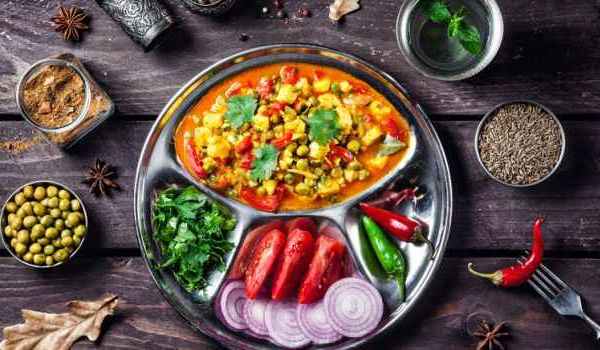
Vegetarian foods can also make up for protein requirements in the body. Here's what a vegetarian diet plan should look like for bodybuilders.
Vegetarian Diet Plan For Weight Gain
Morning
2 boiled eggs with veg sandwich (2 multigrain bread), and 4 or 5 almonds with black Coffee
Lunch
1 chapatti with mix Vegetables +Boil dal (green-yellow) with broccoli salad and a small bowl of curd
Evening
Half apple/kiwi/ half banana with green tea (1 cup) and diet chidwa (rice flakes)
Dinner
1 small bowl of brown rice with vegetable soup plus broccoli salad
Bed Time
Lukewarm water or green tea (1 cup)
But besides this, some basic things need to be taken care of while following a vegetarian diet for bodybuilding. Take a look.
1. Get sufficient calories
One of the most important rules to follow when on a vegetarian diet for bodybuilding is getting enough calories. If you do not get enough calories, your body may turn the limited amount of protein into fuel and use it up during workouts. This way, you might not build muscle mass but notice a deficit.
2. Eat more fruits and veggies
In order to get more calories, eat more fruits and vegetables. There are a number of vegetarian sources of protein like legumes, tofu, dairy foods and more. These will give your body all the essential nutrients it needs and keep the immune system strong as well.
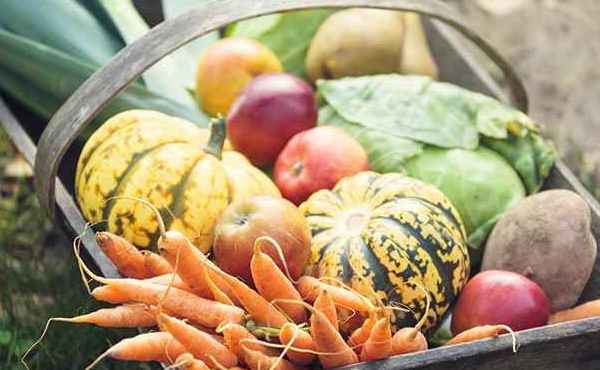
Eating lots of fruits can boost your immune system
3. Do not avoid legumes and chickpeas
If you are a vegetarian and looking for ways to build lean muscle mass, do not miss chickpeas and legumes. It is a good source of low-fat carbs which will add proteins to your body as well.
4. Go for quinoa instead of rice
While rice would add carbs to your body, quinoa would add proteins. Quinoa would taste like brown rice but the nutritional value of this food will be far from brown rice. Quinoa is a complete protein source which is why it would promote muscle-building.

Rice adds carbs to the body, while quinoa adds proteins
5. Keep alternating your food choices
It is important for you to keep varying your diet as well. Eating the same foods over and over again will be monotonous for your taste buds and soon your body may even stop responding to it the way it should. A higher and better variety of foods in your diet will add more nutrition to your body, as per its requirements.
6. Use nuts as your fuel
While non-vegetarian bodybuilders may fill up on grilled chicken to fuel their workouts, vegetarians can make use of nuts. They are a healthy source of fats and proteins which can help you stay energized throughout your workout and can help you gain muscle mass easily.

Nuts are a healthy source of fats and proteins
High Protein Vegetarian Meal Plan
To cover a wider range of possibilities we designed each meal plan slightly differently. Due to differences in calorie requirements between men and women, Version One took a 5’6’’ 160 lbs female as an example. Version Two took a 5’9” male. Naturally either meal plan is suitable for any gender, please see the notes below on how to personalise them for your exact needs.
Version One
The goal is to lose weight and tone up.
The daily caloric intake is 1600 kcal – and is geared towards a 5’6’’ 160 lbs female.
- 18% protein in a 1600 kcal diet equals 80g protein
- You’ll get roughly 0.5g of protein/lb
Version Two
This meal plan is designed to build muscle.
The daily caloric intake is 2500 kcal – ideal for an avg. sized male (around 5’9”).
- 20% protein in a 2500 kcal diet equals 125g protein
- You’ll get roughly 0.75g of protein/lb
Note: We’ve created these meal plans in a way that most of you can use them. But of course you should be following your own needs. Luckily calories are super easy to adjust with our “meal add-on”.
Not hungry anymore? Stop eating or skip the snacks. Or is it just not enough? Support your dishes with another meal add-on or add some fruits, nuts, yogurt or hummus to the daily snacks.
You might think that the protein share in our meal plan is still not high enough. After all, it doesn’t reach the 1g protein/lb rule often promoted in the bodybuilding world – although that’s a very contested issue, as you’ll see further on down.
Of course it’s possible to amp up the daily protein intake as a vegetarian to that amount. But let’s do two things first: see what options we have and read up on how much protein we really need.
Vegetarian Protein Sources
Dairy: If you eat a bowl of yogurt with oats as a snack and some cheese on a sandwich or in a salad then you already take in a very decent amount of dairy. If you overdo it, you might get problems with acne (back to age 16, yaay!) or your poop.

Yogurt with cinnamon, grapes, walnuts and a Drizzle of maple syrup
Legumes: To eat 2-3 cups of cooked legumes you will probably need two meals. In my opinion that’s enough. Here’s why: first, the more beans, peas, chickpeas or lentils you eat the more of a fart festival you’ll be.
Second, even though legumes are considered to be super healthy in mainstream medicine, there is some controversy about the dangers of their high phytic acid content. Phytic acid makes it more difficult for your body to absorb nutrients like iron, zinc and calcium. BUT: if you cook legumes properly you reduce the phytic acid amount to a safe degree. Still, like with everything – better not to overdo it.
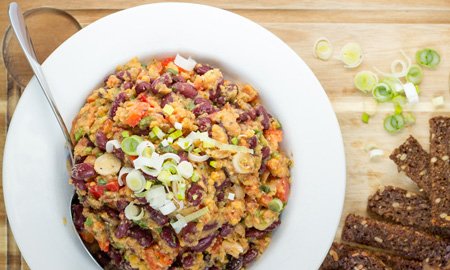
Lentil Bean Salad
Soy: Obviously soy belongs to the family of legumes. But it deserves a separate paragraph as it’s used in so many meat replacement products. It has been stated it’s safe, but also I’m sure you’ve heard many people say soy can cause health problems (here’s an excellent piece on that issue). I’d aim for a soy yogurt, some soy milk or tofu every second day or so. Again, moderation is key.
Grains (Bread, Pasta, Rice, Oats, etc.): Grains are a great way to accompany almost any dish. Be it oats in your yogurt, brown rice with a veggie curry or a slice of bread for your soup. Plus they contain a decent amount of protein.
The drawbacks: Similar to legumes, they contain a high amount of phytic acid. And of course ramping up on grains also increases your calorie count a lot due to their high carb content. That again can lead to fat pads above your muscles
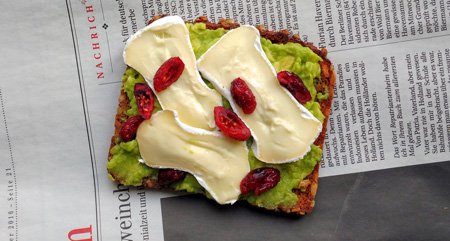
Toast with avocado, brie and cranberries
Nuts & Seeds: It’s great to have them in your diet, not only for protein but also for various other nutrients (iron for example; flax & chia seeds for omega-3). By increasing your protein intake through nuts, you’ll move up your overall calorie intake a lot. They are incredibly nutrient dense.
Also, too many of them might lead to digestion problems. There’s a reason you feel usually pretty stuffed after two handful of nuts or seeds.

Various nuts and seeds
Eggs: Are healthy and among other nutrients are an awesome source of protein. I personally think two a day is enough though. I mean seriously. This literally means you have 2-3 chickens running (or standing) around somewhere producing eggs ONLY FOR YOU.
When I see high protein recipes calling for 6 egg whites I can only shake my head. It’s the epiphany of “I don’t care, I need to look good. Me”. At some point it’s got to go beyond me and my body.
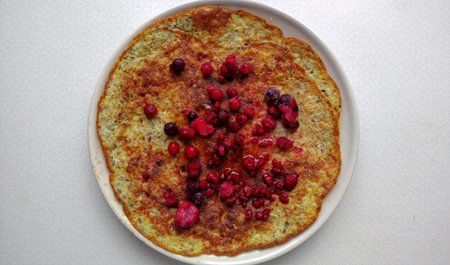
Banana Egg Pancake
Green Vegetables and Leaves: The more the merrier. We should try to get some greens on our plates every day, ideally twice. If you eat more greens to improve your protein intake, you probably won’t get health problems, nor will you put on weight.
The only downside is you’ll have to eat loads! I’d love to see you munch two bunches of broccoli a day for 18g of protein. Difficult task.
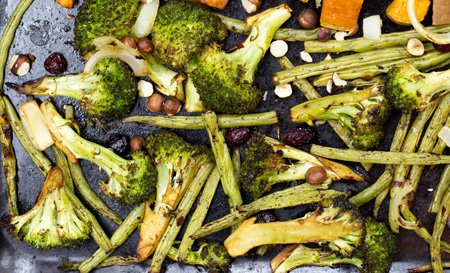
Roasted green beans and broccoli
As vegetarians these are pretty much the options we have, when we’re looking for protein. As you can see many sources can have drawbacks, if you overdo them. Admittedly, some of them are less confirmed than others.
Either way, this is reason enough for me to put the first priority of our vegetarian high protein meal plan on a balance. If you put the focus first on adding as much protein as possible, it is likely to result in an unbalanced diet, which might lead to health problems.
How much protein do we actually need?
The RDA, recommended daily allowance, is at 0.36g of protein per pound of body weight (0.8g per kg). By percentage that would be roughly 10% of your daily caloric income. Note that is the minimum requirement for a non-active sedentary person to not get sick. That means a full-on couch potato would just get by on that daily intake.
But how much protein do we need to thrive?
Of course this depends on your goals. But in general you can say if you want to build muscle you need more protein than if you just want to maintain your weight. A higher protein intake is also likely to be beneficial for weight loss. Although the guys from Harvard aren’t as sure as some others about the impact.
So, if you’re hitting the gym – be it for building muscle or losing weight – a healthy recommendation would be to aim for 17 – 20% percent of calories in protein per day. That would translate into roughly 0.5g – 0.7g per pound – up to double the RDA.
The more protein the better?
In the bodybuilding world often times 1g of protein per pound is recommended in order to make sure you don’t lose any “gainz”. The validity of this rule has been doubted times over in the past. Various studies found that your body can take advantage of anything up to about 0.8g of protein per pound – given that you train like an athlete (check out this study of 23 power lifters for example).
There’s also some discussion, without a clear conclusion, about the dangers of high protein diets (around 30% of calories in protein), especially in regards to kidney disease.
Whether it’s true or not – as with everything – moderation is key. Not to mention that you’d have a really tough time to reach such a high volume of protein on a vegetarian diet (well, on any diet actually) without using protein powder.
To sum things up Vegetarian Diet Plan For Weight Gain
We have to admit that the question “where do you get your protein, bro?” is not such a bad one after all – especially if you’re pursuing fitness goals. But just filling up the meal plan with vegetarian high protein recipes and then just sending you off is not our style. This post has been prepared to give you as much information as possible as a vegetarian seeking a high protein diet.
For a vegetarian it is definitely possible to get in loads of protein in a healthy and this is what we’ve done with our meal plan. Though getting all the way up to the “bodybuilding rule” of 1g/lb is very tough. You can do it, but we have serious doubts that it’s very healthy and whether it’s actually necessary.



